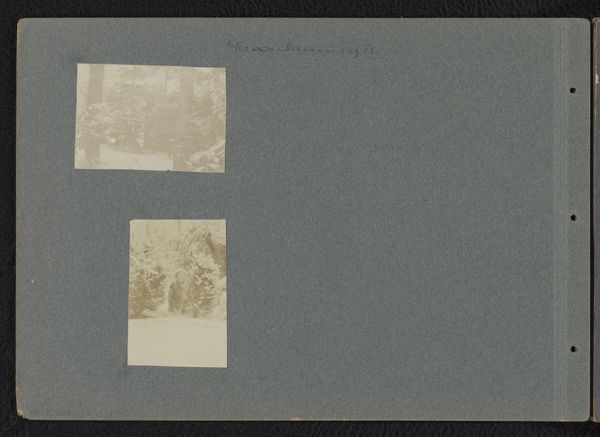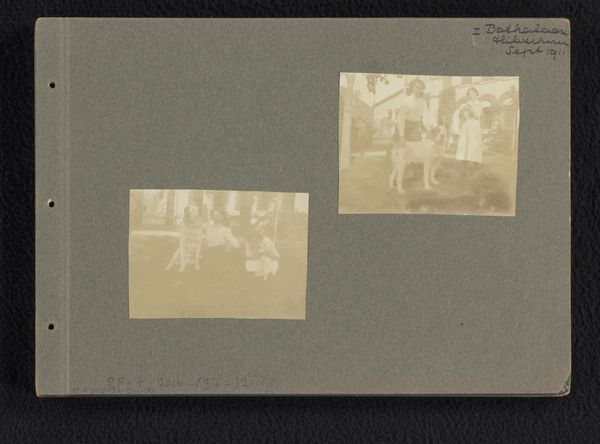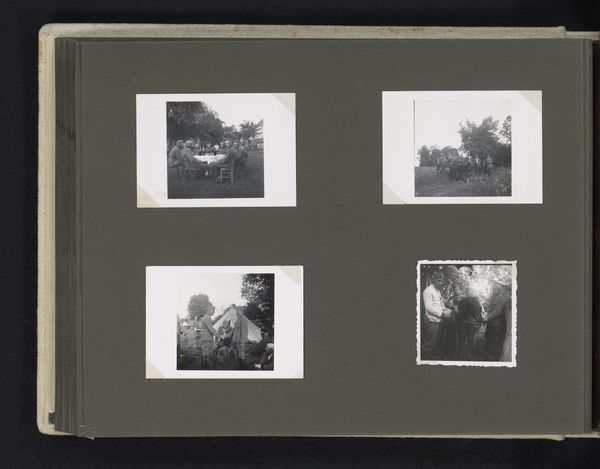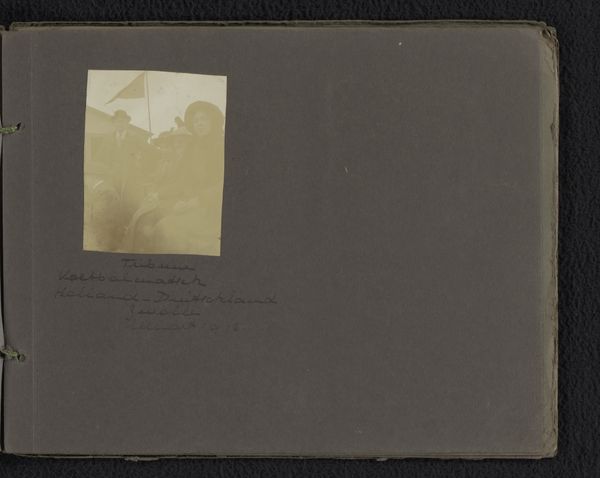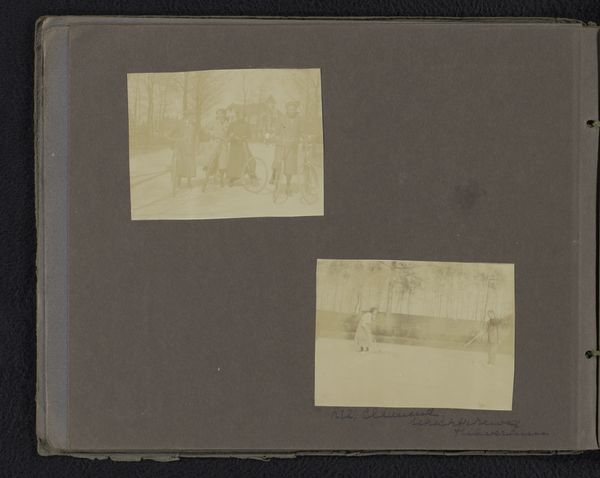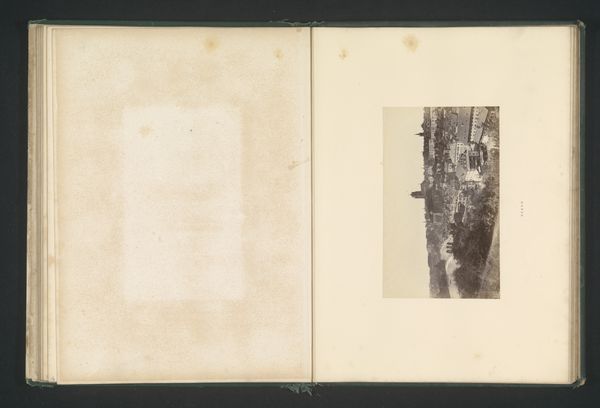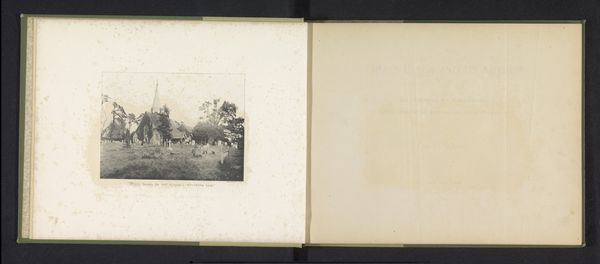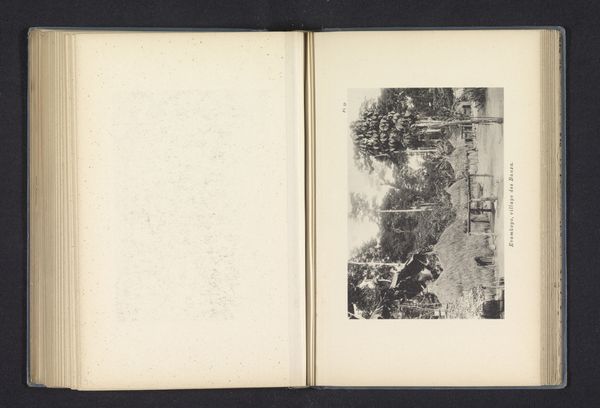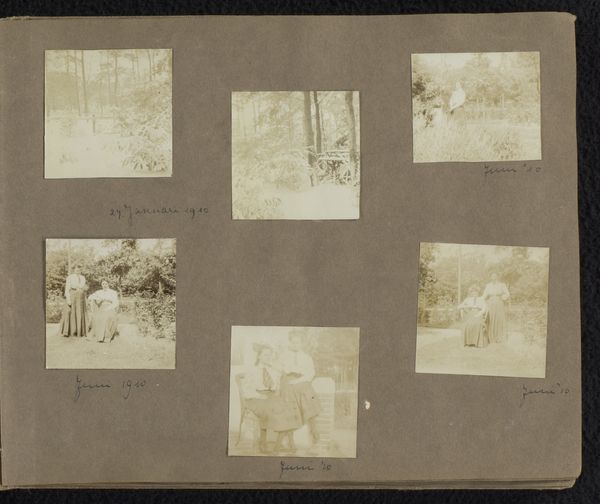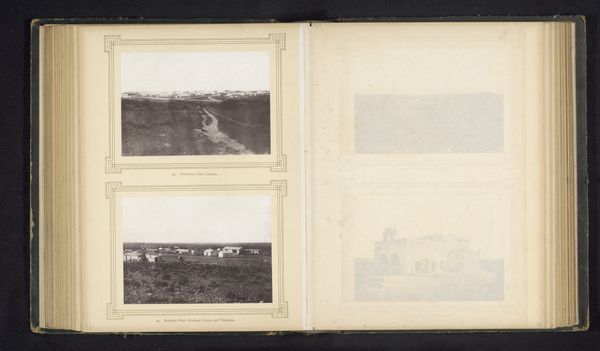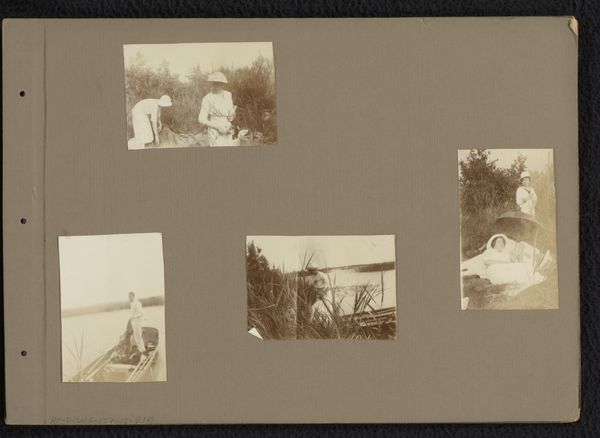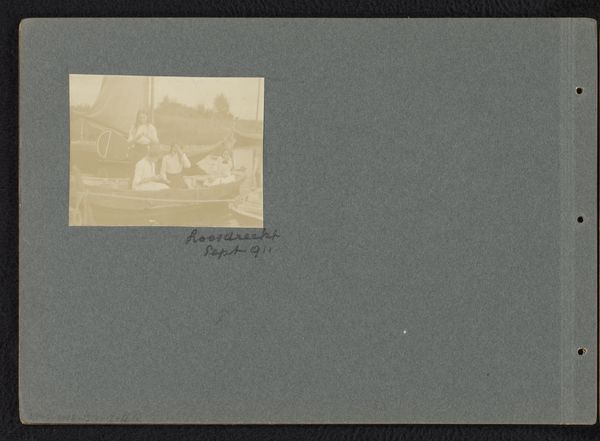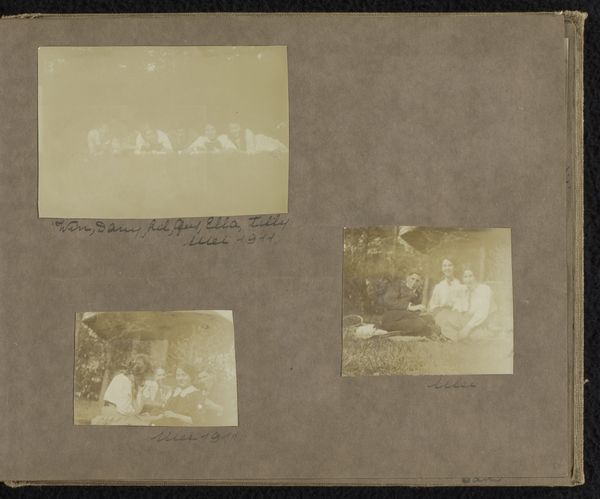
Loentje Onnen met vriendinnen in de tuin van een woonhuis aan de Bothalaan in Hilversum 1912 - 1914
0:00
0:00
photography, albumen-print
#
portrait
#
garden
#
landscape
#
photography
#
genre-painting
#
mixed media
#
albumen-print
Dimensions: height 240 mm, width 300 mm
Copyright: Rijks Museum: Open Domain
Curator: This photograph, titled "Loentje Onnen with friends in the garden of a house on Bothalaan in Hilversum," dates from between 1912 and 1914. It's presented as an albumen print. What are your initial thoughts? Editor: A definite sense of nostalgia. It feels like a casual snapshot, not a staged portrait, but imbued with the stillness of that era. The tones of the print are lovely; it adds a timeless quality to this domestic scene. Curator: Absolutely. The albumen print process itself is crucial here. It involved coating paper with egg white to create a smooth surface for the photographic chemicals, resulting in that distinctive glossy finish and warm sepia tone. The material reality of early photography shaped the aesthetic and dictated its accessibility. Editor: And location clearly plays a part in that accessibility. We're given such specific detail – the Bothalaan in Hilversum. That pinpointing anchors the image in social and geographical space, telling us this isn’t just any group of women, but women of a particular place and perhaps class enjoying leisure time in their domestic environment. Curator: Exactly. Understanding albumen printing as an industrial process highlights how portraiture shifted from being the domain of the wealthy and connected through painting, to become accessible to middle class communities by way of photography and thus altered the landscape of visual imagery. Editor: And considering the era—pre-World War I—this casual depiction of female friendship also takes on historical weight. It speaks to the evolving social dynamics for women in that period, capturing them in this informal, yet very visible format of the photographic print and circulating images into a network that perhaps extended beyond those pictured. Curator: Precisely, the intersection of technological development, class mobility and social visibility made photography an accessible social tool that extended past its initial use in the world of documentation. It reflects shifting social landscapes as well as the history of art. Editor: This is a fascinating glimpse into the intersection of personal lives and evolving social narratives of that era, brought to us through the fascinating technology that printed such images. Curator: Agreed. This unassuming photograph offers a powerful lens through which we can understand a culture, moment and society that continues to captivate audiences to this day.
Comments
No comments
Be the first to comment and join the conversation on the ultimate creative platform.
